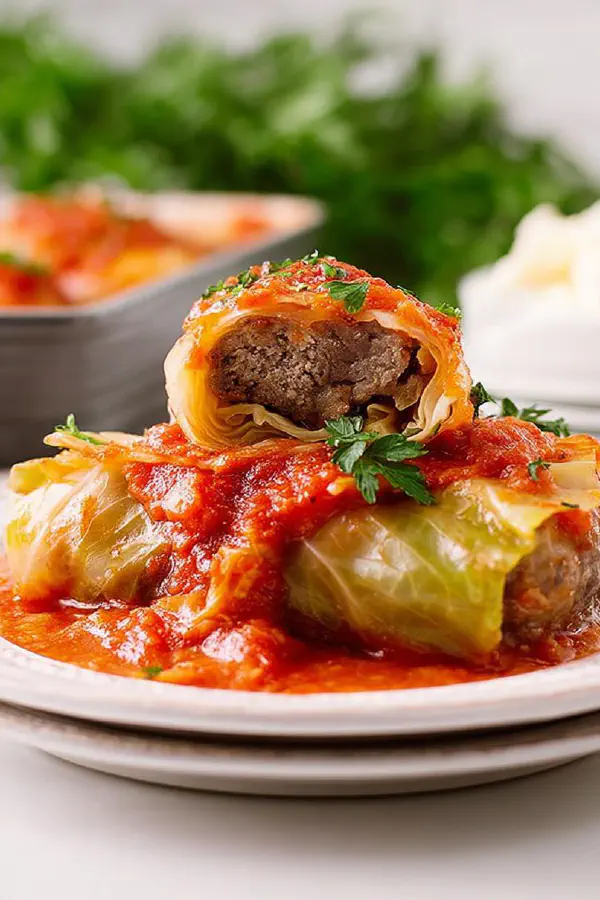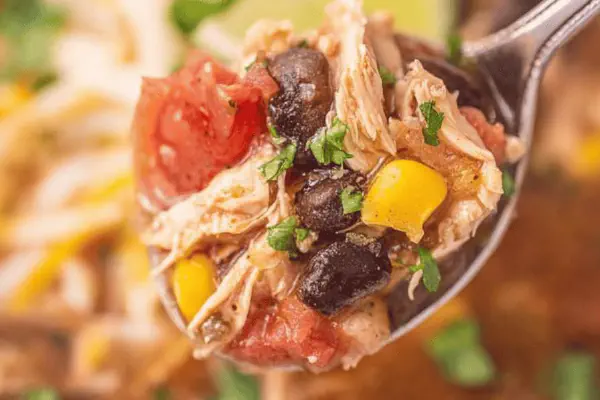Featured Recipe
Twisted Cabbage Rolls

By Kate
"
Ground pork replaces beef for a juicier filling. Brown rice swapped for quinoa to speed cooking and add nuttiness. Tomato paste adds depth to sauce with apple cider vinegar balancing acidity. Leaves blanched in simmering salted water until pliable, then stalks trimmed for easy rolling. Rolls filled with spiced meat-quinoa mix, rolled tight. Sauce poured over, baked covered till sauce bubbles and cores firm yet tender. Rest before slicing into pillows of savory comfort. Sound cues—soft pop of simmering sauce, faint smell of caramelized browning—help gauge progress. Substitutions and timing tips scattered for no-fail results.
"
Prep:
25 min
Cook:
Total:
Serves:
4 servings
cuisine
comfort food
recipe
Introduction
Cabbage rolls take patience but rewards come in layers, literally. Not the quickest weeknight fix but not a weekend beast either. Start by softening the leaves till flexible yet sturdy—no cracks that spill filling in the oven. Ground pork offers more moisture than beef; fattier, so less drying in bake. Quinoa cooks faster than rice and adds texture and a slight nutty punch—use straight from fridge to keep filling cool, so egg binds better. Sauce needs acidity balance—too sweet or too sour, rolls lose their soul. Baking covered traps moisture; foil peeling off late tempers the sauce. Wait before slicing so juices settle—too hot, meat falls apart. A dance of timing and tactile senses here. Sight, smell, touch guide your way. Doesn’t hurt to sneak a taste of sauce and tweak salt early. Big leafy hugs filled with savory, tang, and just a touch of charred edges. That’s the goal. No fluff. Only what works.
Ingredients
About the ingredients
Cabbage needs to be fresh and dense, preferably green or savoy for pliable leaves. Core removal is crucial; leftover stalk breaks rolls and makes bites chewy. Ground pork swaps easily with ground turkey or lamb—turkey yields less fat, so add a splash of oil to the mix. Quinoa cooked in unsalted water or low-sodium broth suits the filling, but quick-cooking white rice is a classic stand-in—cook slightly underdone to avoid mush later. Tomato paste in sauce isn’t just for color but deepens flavor and thickens; canned diced tomatoes bring bright acidity. Brown sugar rounds out zip; apple cider vinegar is gentler than plain white and adds complexity. Worcestershire sauce—optional but adds umami punch. Saltwise, use kosher or sea salt for evenness—remember salt balances the pork fat, smells, and tomato brightness. Onion can be raw or lightly sautéed if you want sweeter softer notes but raw offers contrast. Garlic powder is a failsafe shortcut—fresh garlic can be substituted, but watch for bitterness. Oils or sprays for dish prevent sticking; olive or vegetable oil both fine.
Method
Technique Tips
Preheat accurately—oven temps vary; a quick oven thermometer is priceless. Boiling cabbage in salted water softens leaves quickly; watch leaves for visual dulling, edges curling, and test pliability by folding—should bend without cracks or holes. Removing stalks reduces bulk; use a paring knife for precision. Mix filling with care; compressing too much makes dense rolls; light but thorough mix keeps filling tender. Portion size depends on leaf size but consistency in filling size helps even cooking. Rolling technique—roll from stalk end toward edge, tuck sides mid-roll; think tight. Place seam down for stability so rolls don’t unravel. Sauce made separately hits all flavor corners; mix well so sugar dissolves, acidity blends. Pour sauce evenly, don’t overfill; too much liquid means soggy rolls. Cover dish with foil to trap steam but secure to avoid leakages. Baking time varies by oven and roll size; bubbles and slight browning on edges cue doneness. Removing foil late crisps the top and intensifies flavor. Resting after baking firms rolls and melds flavors; slice gently with a sharp knife to keep form intact. If sauce too thin, simmer on stove uncovered briefly. Plate warm, sauce spooned generously over. Labels like ‘cook 90 minutes’ are guides; learn to read your oven and trust tactile and olfactory hints.
Chef's Notes
- 💡 Blanch cabbage in salted water—bubbles signal it’s working. Leaves should bend without cracks—key for rolling. Don’t overcook; just pliable.
- 💡 Trim stalks carefully—don’t ruin leaves. Use a sharp knife. Too thick makes rolling tough. Stalks also make chewing a challenge. Use precision.
- 💡 Keep filling cool. Cook quinoa with salt-free water—flavor mindfully. Ground pork brings moisture—don’t use lean meats. Fat matters.
- 💡 Check sauce consistency after baking. If runny, simmer on stove briefly. Taste early—adjust sweetness or acidity as needed. Key flavors balance.
- 💡 Rest rolls after baking—juices settle. Slice gently with sharp knife. Avoid tearing apart. If fillings spill, they dry out—savor flavor intact.
Kitchen Wisdom
What if cabbage leaves crack?
Boil less; check pliability. Shouldn’t crack or fall apart. This ruins rolling. Try blanching shorter.
Can I use ground turkey?
Yes, but less fat. Add a touch of oil to filling for moisture. Texture changes, but still savory.
What’s the best way to store leftovers?
Store covered in fridge. Lasts for 3–4 days. Reheat gently, cover with sauce to keep moist.
How to avoid soggy rolls?
Don’t overfill sauce—key. Cover tightly, secure foil to trap steam. Watch baking temp closely, bubbles help.



